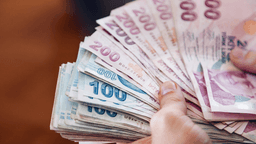İlgili Yayın Dosyaları

TEPAV stated that Turkey achieved an impressive growth performance whereas the recovery process in unemployment and exports could not be completed yet.
ANKARA- TEPAV examined the performance of Turkey's economy in 2010 relying on the key macroeconomic indicators. Production and consumption indicators for 2010 indicated that the economy has regained the pace before the crisis whereas unemployment could not be reduced to the pre-crisis levels and export performance remains weak, raising concerns about Turkey's economy. Besides, recovery in the absence of export dynamism turns current account problem into a more dangerous and substantial one.
TEPAV policy note "One third of recovery process is completed; but there remains a problem" by Economic Policy Analyst Sarp Kalkan is published. The note said that it is possible to analyze the economic recovery process on the basis of three key indicators and continued:
"These indicators are recovery in production, recovery in unemployment and recovery in export performance. Level of production in the period before the crisis (the first quarter of 2008) was regained. Production volume that faced a 13 percent contraction during the crisis period has completed the recovery process: current level of production is slightly above 100 - the index level at the pre-crisis period. Unlike the 2001 crisis, the locomotive of recovery in the 2008 crisis was domestic demand (consumption and investment expenditures) rather than exports.
Unemployment rates were affected to the largest extent by the crisis and this impact of the crisis on unemployment rate still continues. Along with the crisis, unemployment rate increased by 32 percent. Despite the signs of rapid recovery in 2010, unemployment rate was fixed slightly below 12 percent in the last two quarters reinforcing the risk that the problem will turn into a medium-term challenge. Unemployment rate that was 100 before the eruption of the crisis did not fall back to 100. The rate currently stands at 17.5 percent.
The third important indicator determinant for recovery analysis is the volume of exports. Along with the crisis exports contracted by 15 percent and did not demonstrate a strong recovery performance in the following period. Exports still vary around the 90 percent interval. Data for the last quarter of 2010 announced the day before reveal that this trend continues. Exports that corresponded to 88.2 percent of the pre-crisis level as of the third quarter of 2010 stood at 88.1 percent at the end of the fourth quarter."
Current account deficit turned into a severer problem
Stressing that problems about the export performance in spite of the recovery in production turned current account deficit into a severer problem, TEPAV policy note said: "This is another dimension of the economic performance of Turkey in 2010. The policy change introduced by the Central Bank must be assessed in this frame." Emphasizing that it is the first time in Turkey that domestic demand played the major role in recovery of production, the note underlined that the ratio of current account deficit to FX generating transactions - that is to export and tourism revenues - reached the pre-crisis levels which were already risky in only one year.
Growth process should be managed to avoid trouble
The study concluded assessing that:
"The question the analysis of the recovery performance in 2010 must raise is: If the economy grows by 7.5-8 percent, in spite of the fact that the Medium Term Program estimates 4.5 percent growth and that all macroeconomic balances are built upon this estimation, would this be an indicator of successful economic management? The answer would be no. This is exactly where the source of the current account deficit problem with the new face lies. It appears that this will be the research subject of the period ahead."




